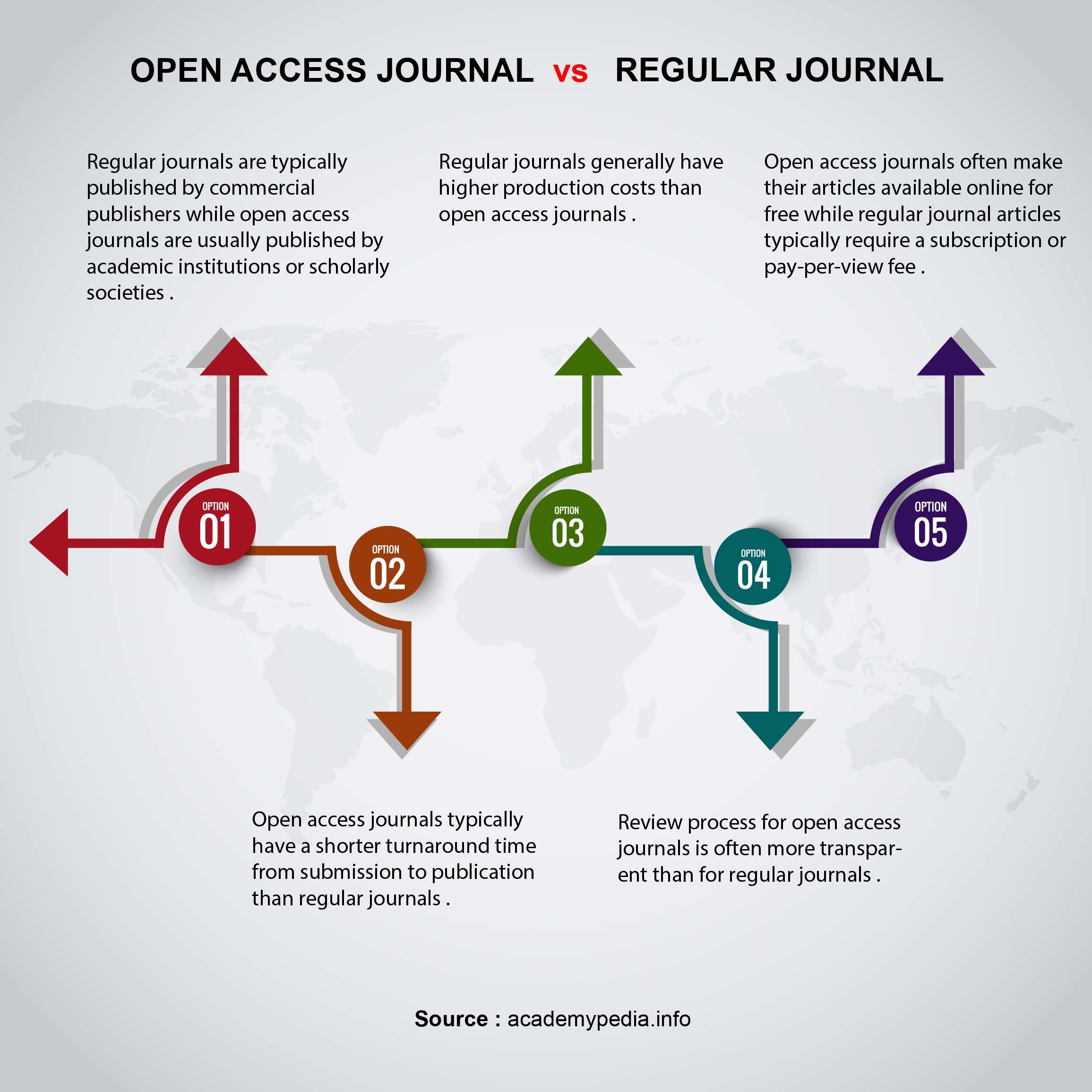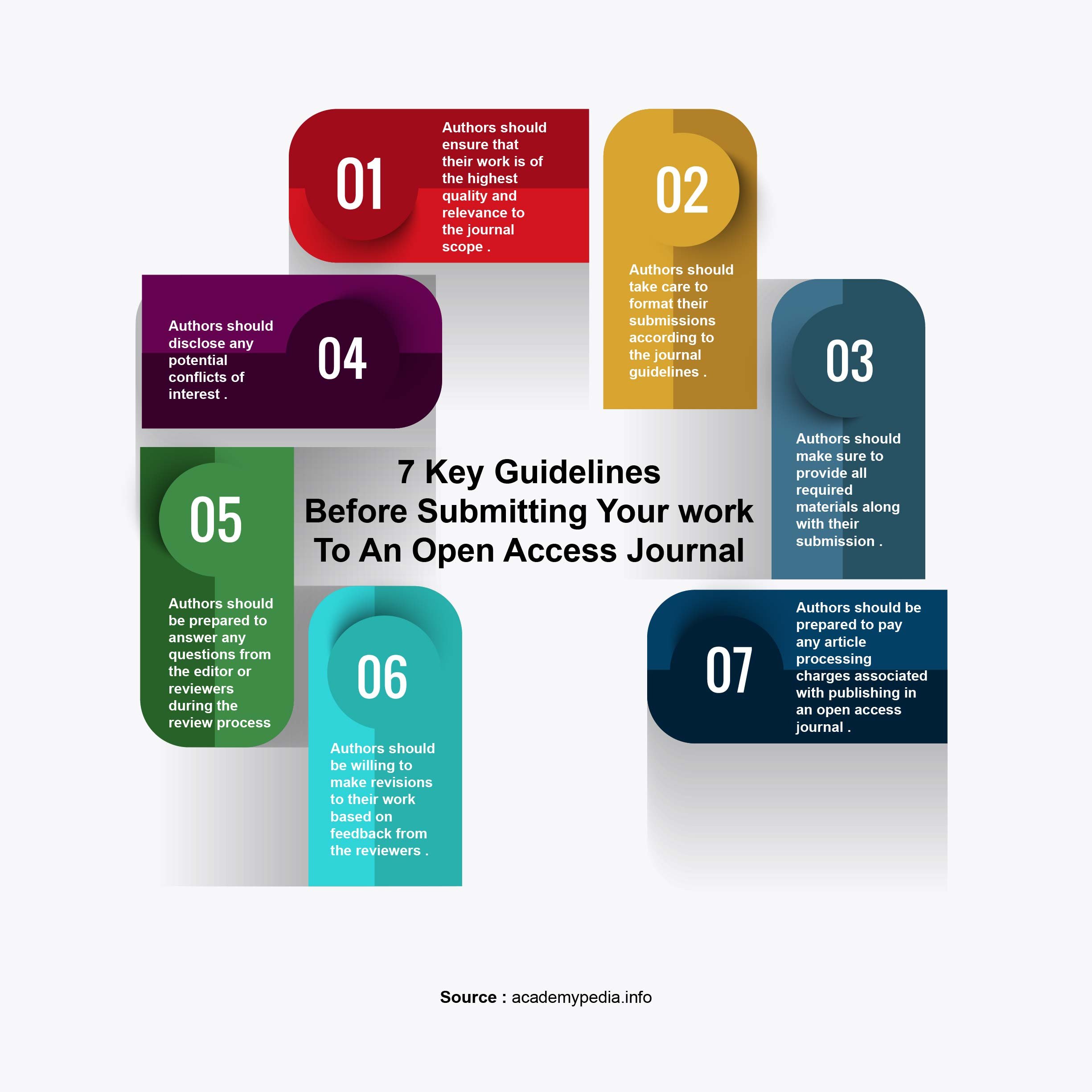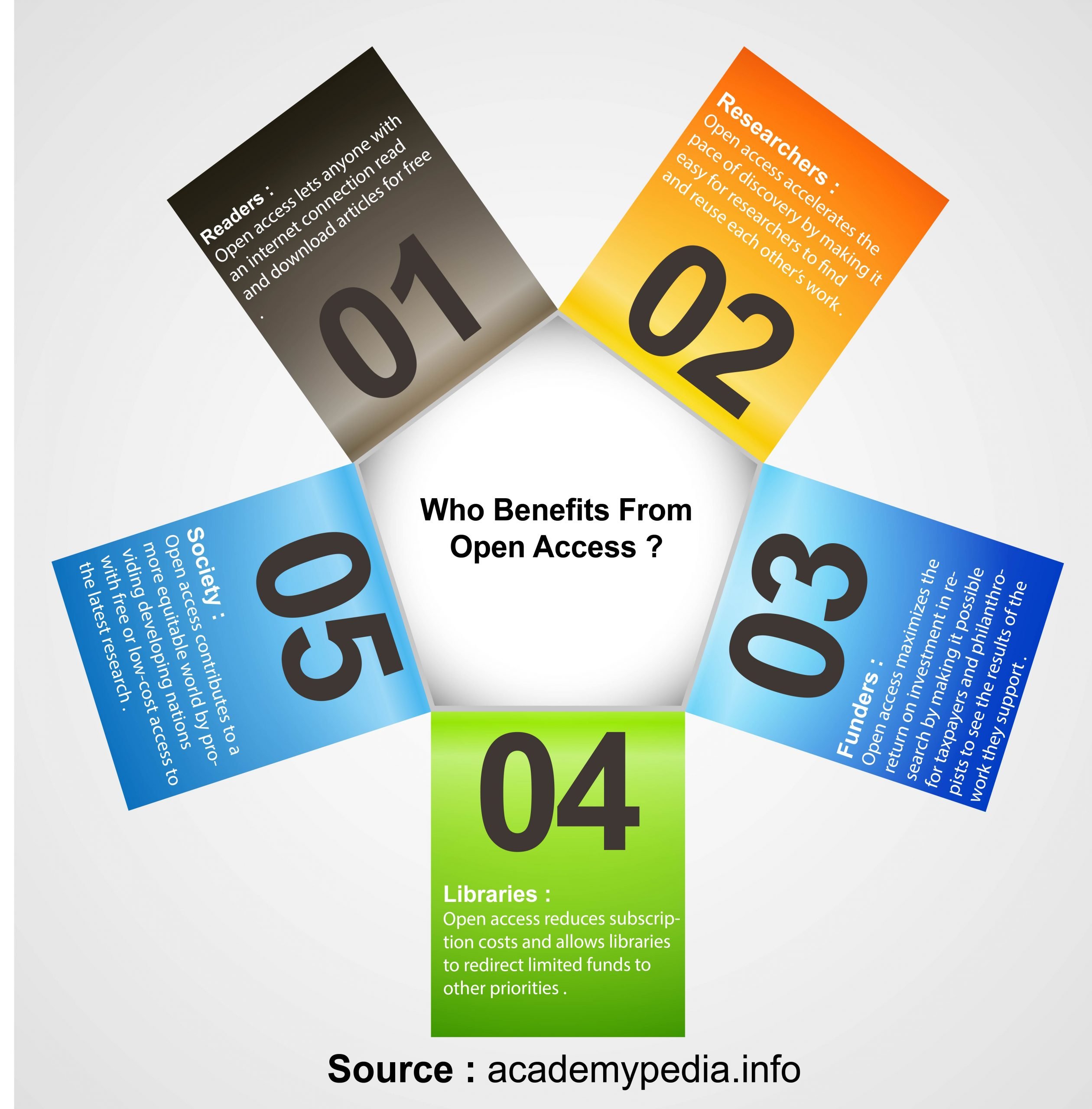Introduction
As the amount of scientific knowledge published online continues to grow, it can be difficult to know where to look for reliable information .
Open access journals are a great way to gain access to credible, up-to-date research in your field of study .
Read on to learn more about what open access journals are and how they differ from other types of publications .
What is meant by open access journal ?
The term “open access journal” means a journal that makes its content freely and universally accessible online, without charge to the reader. Many open access journals are financed by charging authors a publication fee, which is sometimes paid by their research funder or employer .
There are a number of reasons why researchers might choose to publish in an open access journal. Open access allows for greater visibility and discoverability of an article, as it can be accessed by anyone with an internet connection. This can lead to increased readership and citations for the article. In addition, some funders and institutions require or incentivize researchers to publish their work in open access journals.
Not all open access journals are created equal, however. Some use a business model known as “Gold open access,” in which authors pay a publication fee to make their article freely available. Others use a model known as “Green open access,” in which authors make their article freely available after a embargo period (usually 12-24 months), by placing a copy of this article into the open access journal repository .
That’ the reason why Green open access is also called “self-archiving” .
It is worth noting that some publishers offer both Gold and Green open access options .
When evaluating an open access journal, it is important to consider the quality of the journal, including factors such as peer review policies, editorial board member expertise, and publication standards. The licensing terms under which the journal content is made available should also be considered; for example, some licenses allow for commercial reuse of articles while others do not. You can learn more about different types of Creative Commons licenses here: https://creativecommons .
( Colors of Open Access Journals ,
Source : Academypedia.info )
What is meant by Diamond or Platinum open access journal , Bronze open access journal , Hybrid open access journal and Delayed open access journal ?
A platinum ( also called Diamond ) open access journal is a type of scholarly journal in which all articles are made freely available online to anyone with internet access, without the need for a subscription. This allows for greater public access to scholarly research.
Platinum open access journals are typically published by large, well-established publishing houses. Many of these publishers also offer other types of journals, including subscription-based journals. Some examples of well-known platinum open access journals include BMC Medicine .
There are a few different business models that platinum open access journals can use to sustain themselves . The most common model is charging authors a publication fee for each article that is accepted for publication . This fee is usually paid by the author’s institution or research funder. Alternatively, some journals are supported by advertisement revenues or sponsorships .
Charging publication fees has been shown to be a sustainable business model for platinum open access journals . It has also been shown to provide a financial incentive for publishers to maintain high standards and peer-review processes, as they rely on authors submitting quality papers to generate revenue .
A hybrid journal is one that offers some articles as open access, while others are behind a paywall. This means that readers can choose to either pay for individual articles or subscribe to the journal to read all the content. Full open access journals are entirely free to read, and anyone can access all the articles without having to pay anything .
Delayed open access journals are those that make their articles available to the public after an embargo period. The length of this embargo period varies, but is typically around 12 months .
After this time, the articles are made freely available on the journal website .
What is meant by open access peer-reviewed journal ?
Peer review is the process by which experts in a field evaluate research before it is published .
This evaluation ensures that only high-quality, valid research is published .
The peer review process can be divided into three main types :
1. pre-publication peer review
2. post-publication peer review
3. self-publication peer review
Pre-publication peer review is the most common type of peer review. It occurs before an article is published in a journal . In this type of peer review, authors submit their manuscripts to editors at academic journals . The editors then send the manuscript out to a few experts in the field (known as referees or reviewers) . These referees evaluate the quality of the research and make recommendations to the editor about whether or not to publish the article .
Post-publication peer review is less common, but it is becoming more popular as open access publications become more prevalent . In this type of peer review, scholars critique research after it has been published online . These critiques are then publicly available for anyone to read .
Self-publication peer review is also becoming more common with the rise of open access publication models . In this type of peer review, authors publish their own work on personal websites or in open access journals without going through traditional journal publishers . However, they still submit their work to experts for evaluation before making it publicly available .
That’s’ being said , the peer-review process is not perfect and open access journals are under constant pressure to publish high-quality articles . This means that Journals are constantly looking for ways to improve the quality of the papers they publish .
Indeed, open access journals cannot risk tarnishing their reputation with articles considered to be of poor quality by reviewers .
Journals also face competition from other journals who may be able to offer better quality articles . In order to keep up with the competition, journals need to ensure that they are only publishing the best quality articles .
To sum up , good quality articles are essential for ensuring that a journal maintains its reputation and readership . Journals will continue to reject some papers in order to maintain their high standards .
( Peer review Process of an Open Access Journal ,
Source : Academypedia.info )
What is the difference between traditional press journal and open access journal ?
Regular paper journals are the traditional type of journal, in which articles are peer-reviewed and then published in a physical journal. The journal owns the copyright to the article, and readers must pay to access the content .
Open-access journals are a newer type of journal, in which articles are published online and anyone can freely access the content. Open-access journals are often funded by universities or research institutions, rather than by subscription fees .
So , there are a few key differences between traditional press and open-access journals that are important to keep in mind. First, open-access journals typically make all of their content freely available online, while traditional press journals do not. This means that anyone can read and download articles from an open-access journal, without needing to pay for a subscription .
Second, open-access journals often operate under different business models than traditional press journals . Open-access journals are sometimes supported by author fees, while traditional press journals generate revenue through subscriptions . This difference can Affect how quickly new articles are published, as well as the overall quality of the journal .
Finally, there is also a difference in the way that open-access and traditional press journals are distributed . Open-access journals are usually distributed online through digital platforms like PubMed Central, while traditional press journals are typically accessible through print subscriptions .
That’s being said , both traditional press paper journals and open-access Journals have their advantages and disadvantages. Regular paper journals tend to be more prestigious, because they have stricter standards for publication. Open-access journals tend to be more widely read, because they are easier to access .
( Differences between Traditional and Open Access Journal ,
Source : Academypedia.info )
Can I Publish My Thesis or Research Paper in an Open Access Journal ?
There are a number of reasons you might want to consider publishing your thesis or research paper in an open access journal . For one, doing so makes your work more widely available to the public, which can help to further your career and/or scholarly goals . Additionally, many open access journals provide greater visibility for your work through online search engines and social media sharing .
Of course, it’s important to make sure that the open access journal you’re considering is reputable and will offer high-quality peer review for your submission . Be sure to carefully read the journal’s guidelines for authors before submitting your work . If you have any questions, feel free to contact the editorial staff directly .
Is it worth publishing in open access journals ?
Open Access journals provide a number of benefits to authors and readers .
First, Open Access journals ensure that anyone with an internet connection can read and download the full text of articles without having to pay a subscription fee .
Second, Open Access journals typically have shorter publication timelines than traditional subscription-based journals, meaning that research findings are available to the public sooner .
Third, Open Access journals often provide more user-friendly features than traditional journals, such as high-resolution graphics and interactive data visualizations .
Finally, Open Access journals allow authors to retain copyright over their work, which gives them greater control over how their work is used and disseminated .
( 7 Key Guidelines Before Submitting Your Work To An Open Access Journal ,
Source : Academypedia.info )
Who benefits from open access ?
Open access benefits everyone who wants to read, use or build upon the research articles that scholars publish .
That includes :
- Readers :
Open access lets anyone with an internet connection read and download articles for free .
- Researchers :
Open access accelerates the pace of discovery by making it easy for researchers to find and reuse each other’s work .
- Funders :
Open access maximizes the return on investment in research by making it possible for taxpayers and philanthropists to see the results of the work they support .
- Libraries :
Open access reduces subscription costs and allows libraries to redirect limited funds to other priorities .
- Society :
Open access contributes to a more equitable world by providing developing nations with free or low-cost access to the latest research .
( Who Benefits From Open Access Journal ,
Source : Academypedia.info )
What are the disadvantages of open access ?
There are a few disadvantages and potential threats to open access publications .
One of the concerns is that the peer review process may be circumvented or not as rigorous as it should be for open access journals, since anyone can submit an article .
Additionally, because anyone can access these articles, there is a risk of plagiarism .
Another disadvantage is that established and respected journals may be less likely to accept articles from open access publications if their authors are not well known .
Additionally, some argue that the quality of scholarly research in open access journals may be lower overall than in traditional journals due to the low cost (or even no cost) associated with publication .
Do open access journals reject papers ?
With the increasing number of open access journals available, it is important to be aware of the processes in place to determine if your paper will be accepted or rejected .
There are a number of reasons why open access journals may reject papers . Some of these reasons are due to the quality of the paper, while others are more logistical in nature .
One common reason for rejection is that the paper does not meet the journal’s standards for quality .
This can include issues with the research itself, or with the way it is presented . Additionally, some journals have specific requirements for formatting and style that must be met in order for a paper to be accepted.
Another reason papers may be rejected by open access journals is because they do not fit within the scope of the journal. For example, a journal that focuses on medicine may not be interested in publishing a paper on literature . Additionally, some journals only accept papers from certain geographical regions or institutions .
Finally, there may also be logistical reasons for rejection, such as a lack of available space in the current issue or problems with the submission process itself .
Having said that , If your paper is rejected by an open access journal, don’t despair ! There are a few things you can do to increase your chances of getting published in the future .
First, take a close look at the feedback you received from the journal. Is there anything you can improve on for next time? If so, make those changes and resubmit your paper to another open access journal.
Second, try submitting to a traditional journal . Although these journals are not as open to new ideas as open access journals, they may be more likely to accept your article if it suits them .
Finally, keep trying! Don’t give up on your dream of getting published just because you’ve been rejected a few times. If you continue to submit high-quality papers, eventually you’ll find a home for your work .
Do open access papers get cited more ?
Open access papers are published in a format that makes them freely available online, while non-open access papers can only be accessed by those who have a subscription to the journal in which they were published. Several studies found that open access papers are cited more often than non-open access papers .
There are a number of possible explanations for why open access papers are cited more often than non-open access papers . One possibility is that readers have easier access to open access papers and are therefore more likely to read and cite them . Another possibility is that authors of open access papers are more likely to promote their work and make it easier for others to find and cite it .
Whatever the reason, the findings of these studies suggest that making your research open access could increase its impact . If you’re considering publishing your work in an open access journal or making your existing work open access, this is something to keep in mind .
How do open access journals make money ?
There are 8 main ways open access journals make money :
- Advertising :
Open access journals make money by selling advertising space on their websites and in their journals. Advertisers can be companies that sell products or services related to the journal’s subject matter, or they can be companies that provide funding for open access research
- Article Processing Charges (APCs) :
Many open access journals charge authors a fee to have their articles published. These fees are often called Article Processing Charges (APCs) . The money from APCs is used to pay for the costs of running the journal, such as peer review, editing, and publishing
- Sponsorship :
Some open access journals are sponsored by organizations that support open access research. The sponsor may cover some or all of the costs of running the journal
- Donations :
Some open access journals rely on donations from individuals and organizations to cover their costs. Donations can be one-time gifts or they can be made on a traditional press basis
- Subscriptions :
Although most open access journals do not charge readers for accessing articles, some do charge institutions or individuals a subscription fee. The money from subscriptions is used to pay for the costs of running the journal, such as peer review, editing, and publishing
- Membership Fees :
Some open access journals require individuals or institutions to pay a membership fee in order to read or download articles from the journal’s website. The money from membership fees is used to pay for the costs of running the journal
- Investment Income :
Some open access journals invest their profits in order to earn additional income. This income is then used to pay for the costs of running the journal
- Grants :
Some open access journals are supported by grants from organizations that support open access research. The money from grants is used to pay for the costs of running the journal, such as peer review, editing, and publishing
Why are open access journals ranked by their Impact Factor ?
Open access journals are becoming increasingly popular, as they provide a way for researchers to share their work with a wider audience. However, there is some debate over the quality of these journals, as they are not subject to the same rigorous peer-review process as traditional journals . One way to measure the quality of an open access journal is by its impact factor .
The impact factor is a measure of the frequency with which an article in a journal has been cited on average , in a given year. It is calculated by dividing the average number of citations in a year by the total number of articles published in the journal in the preceding two years . The impact factor can be used to compare different journals, and can be helpful in determining where to submit your work .
There are some limitations to using the impact factor as a measure of quality, however.
Impact factors can be inflated by self-citation, or by journals publishing a high proportion of review articles (which tend to be highly cited). Nevertheless, the impact factor remains one of the most commonly used metrics for assessing journal quality and is an important consideration when choosing where to submit your work.
How Can open access journals help Technology Watch Specialists ?
As technology advances so quickly, it is difficult to keep up with all the changes .
By making journal articles freely available online, open access journals provide a way for technology watch specialists to stay on top of innovations by providing easy access to relevant research and information .
In addition, many open access journals offer RSS feeds, which allow technology watch specialists to stay up-to-date on new articles without having to traditional pressly check the journal website. RSS feeds also make it easy to share articles with colleagues and clients .
Finally, some open access journals offer APIs, which allow technology watch specialists to create custom search engines or integrate journal content into their own websites or applications . APIs can make it easier to find the specific articles that a technology watch specialist is looking for, and can help Technology Watch Specialists keep their clients up-to-date on the latest research in their field .
Conclusion
Open access journals provide an important service to the scientific community by drastically increasing the rate of research circulation and allowing anyone ( who has an internet connection ) to freely access valuable research .
They are often funded through grants, donations or article processing fees .
By choosing to publish in open access journals, scientists can maximize their reach while also providing readers with increased accessibility .
Open access is therefore a powerful tool for making scholarly content more widely available and promoting greater global exchange of information and ideas .







